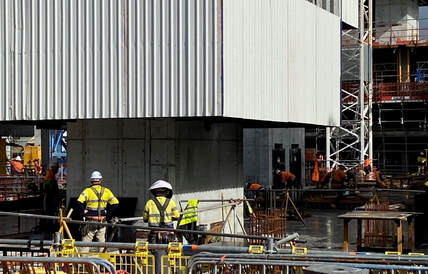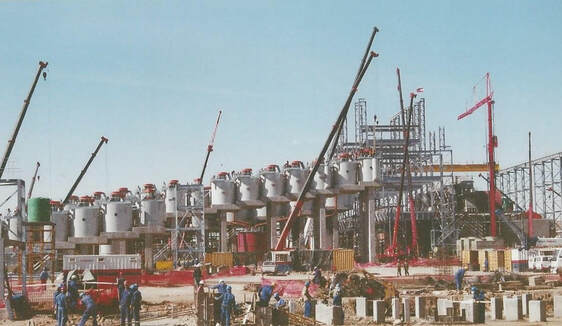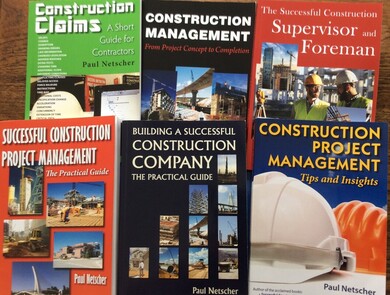"One of the most important aspects of managing a construction project is to be able to manage, work with, and interact with people." As a child we played a game which I’m sure many of you played. We sat in a circle and one person whispered a message in to their neighbour’s ear who then passed the message to their neighbour by whispering in their ear, who passed the message on, and so it went around the circle to eventually reach the person who started the message. Invariably the final message was vastly different to the original. This childhood game clearly demonstrates how messages get misinterpreted. This is even more so in construction where communication is key to a successful project. Imagine on a project if the client said to the architect; “build me a house”, who interpreted it as; “build me a palace”, Then told the contractor what to build and they built; “a warehouse”. We laugh, but this is sometimes almost what happens. #constructionmanagement #constructioncommunication Diversity in constructionOne of the most important aspects of managing a construction project is to be able to manage, work with, and interact with people. Construction projects involve a number of different parties, such as the client, managing contractor, subcontractors, members of the public, Design Engineers, Architects, managers within the company, project staff, tradespeople, general workers, suppliers and their representatives, local businesses and building inspectors. Many of these people come from diverse countries, cultures, languages, socio economic backgrounds, and educational backgrounds. In construction we may have to deal with an irate member of the public who is say upset that our delivery truck drove in front of them, discuss a design problem with the Designer, deal with the client’s banker, or talk to a construction worker in a third world country who may never have had a formal job before (let alone, construction experience). All of these people have to be treated in an equal manner "Construction managers have to use all our people skills to negotiate, persuade, and lead the people working on the project" No matter how frustrated we are, or how bad the day has been, there is simply no place on a construction site where you can hide from dealing with people and their problems. We have to use all our people skills to negotiate, persuade, and lead the people working on the project, while at all times remaining calm. We have to establish and maintain relations with the client, the design team and our team. In all of this we also have to be a coach, a teacher and a mentor to their team. Understanding the diversity of people in construction and being sensitive to cultural differences can be useful when negotiating, since different techniques can be used depending on the person’s background. One technique may yield little or no success with one individual, while another technique will work. Understanding the cultures and backgrounds of the people working on a project will enable better relationships and teams to be formed. "Communication is something that we have to do on construction all the time" Good communication is essential in constructionCommunication is something that we have to do on construction all the time, every day. It’s both verbal and written. Communication should:
Keeping all project stakeholders informedBut communication isn’t just about giving and receiving instructions, it’s also about keeping the various stake holders informed about developments on the project, irrespective of whether they are project staff, workers, subcontractors, suppliers, client representatives, the client or neighbours. The amount and level of communication will vary according to circumstances and the individual. Communication is often best given verbally, which could be at meetings, directly one-on-one, or via telephone. However it may sometimes be in the form of letters or memos that may be addressed to specific individuals, or may be just generalised memos handed to all affected parties, or displayed on project notice boards. "Often things are said, or written in haste, which are regretted long after the event." When issuing letters, emails, memos and verbal communications thought must go into the type of communication. Inappropriate communications can cause irreparable harm to the project, individuals and personal reputations. Often things are said, or written in haste, which are regretted long after the event. "Sometimes a conversation with the client over a cup of coffee can yield far better results than a formal letter." Sometimes a conversation with the client over a cup of coffee can yield far better results than a formal letter. Communication is a two-way streetPart of successful communication is also to listen, to make sure you understand what the other person is saying and ask questions when unsure. Sometimes it's also about what the person isn't saying. Again, people from different cultural backgrounds may say things which we misunderstand or misinterpret because we don't understand them properly. Following the right channelsOn large projects, communications may be addressed to the client, the client’s representative, subcontractors or suppliers, and these may be issued by various staff members. It’s always important the correct channels of communications are used, and only authorised staff members communicate with the relevant parties. If more than one member of staff communicates with any of the parties it can cause confusion, and result in the other party receiving mixed and confusing communications, which is not only unprofessional but can lead to problems. "Communication should be directed to the correct person." Communication should be directed to the correct person. Often communication is addressed to a person who isn't authorised to receive communication, or communication by-passes their manager. This may mean that the communication isn't acted on. All staff must be aware of the communication protocol, and all correspondence should be carried out in a professional manner. All correspondence of a contractual or financial nature should be reviewed by the Project Manager. Written construction communication"Sometimes verbal discussions should be formalised by a letter afterwards." Having said the above it is important that some communication is formalised, particularly communication of a contractual nature. Verbal and hand-shake communications are open to misinterpretation and even to being forgotten completely. It’s also useful to keep formal minutes of meetings which ensure that all attendees are reminded of what was agreed and what needs to be actioned. Sometimes verbal discussions should be formalised by a letter afterwards. That formal letter to the client may be better received after that chat over coffee. Good communication can avoid many problems in constructionMany of the problems on construction projects can be avoided if we communicated better. (Written by Paul Netscher the author of the acclaimed books ‘Successful Construction Project Management: The Practical Guide’ and ‘Building a Successful Construction Company: The Practical Guide’. Both books are available in paperback and e-book from Amazon and other retail outlets. This article is adapted from information included in these books. ) Paul Netscher has written several easy to read books for owners, contractors, construction managers, construction supervisors and foremen. They cover all aspects of construction management and are filled with tips and insights. Visit to read more. The books are available in paper and ebook from most online stores including Amazon. © 2022 This article is not to be reproduced for commercial purposes without written permission from the author.
construction management construction project management
0 Comments
Leave a Reply. |
Archives
June 2024
Note: We welcome genuine comments, especially comments that add additional information to the subject matter in the article. We however reserve the right to remove inappropriate comments, which includes comments that have nothing to do with the subject, comments that include inappropriate language, and comments that are an advertisement for a product or company, or which include an advertising link. Comments must be in English. We will not enter into discussion on why a particular comment was removed.
CategoriesCopyright 2016 - The attached articles cannot be reproduced for commercial purposes without the consent of the author.
The opinions expressed in the attached articles are those of the writer. It should be noted that projects are varied and different laws and restrictions apply which depend on the location of the contractor and the project. It's important that the reader uses the supplied information taking cognisance of their particular circumstances. The writer assumes no responsibility or liability for any loss of any kind arising from the reader using the information or advice contained herein. "I have what I consider some of the best books on construction management."
Books are available from: Amazon.com Amazon.co.uk takealot.com kalahari.com Amazon.in Amazon.de Amazon.fr Amazon.it Amazon.com.au Powell's Fishpond uread bokus Amazon.ca Amazon.es Other retail stores Available in paperback or on Kindle "28 YEARS OF CONSTRUCTION PROJECT MANAGEMENT EXPERIENCE, DEVELOPING SUCCESSFUL CONSTRUCTION PROJECT MANAGERS AND BUILDING SUCCESSFUL CONSTRUCTION COMPANIES"
|








 RSS Feed
RSS Feed




